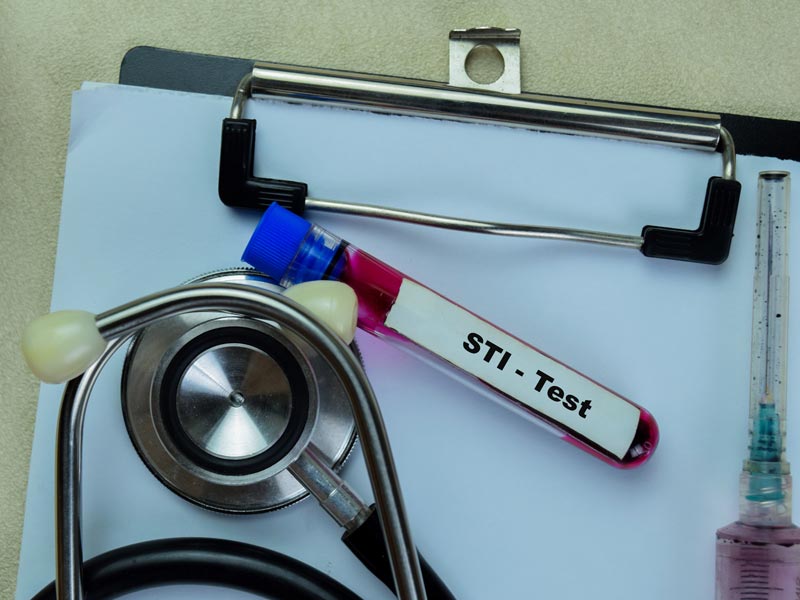CDC Report Shows STI Cases Nearing Pre-Pandemic Levels
AAFP Resources Assist in Screening, Patient Care
April 26, 2023, Michael Devitt — New surveillance data from the CDC indicate substantially more cases of chlamydia, gonorrhea and syphilis reported in the United States between 2020 and 2021, with “particularly jarring” increases in syphilis and congenital syphilis since the start of the COVID-19 pandemic.

The diseases accounted for more than 2.5 million cases of STIs in 2021, with a disproportionately high impact on some patient populations based on race, ethnicity and sexual behavior, as well as on adolescents and adults younger than 25.
Taken as a whole, the data illustrate the effects of social determinants and health care inequities on patient health and well-being, while emphasizing the role of family physicians and other primary care clinicians in effective screening and related services.
“As family physicians, we are such an integral part of our communities,” said Juan Carlos Venis, M.D., M.P.H., an assistant professor of clinical family medicine at Indiana University School of Medicine in Indianapolis. “We can promote public awareness and advocate for increased access to preventive sexual health care for all of our patients.”
STIs by the Numbers
The surveillance report reviewed STI data from 2017 to 2021 and included a notice about the pandemic’s impact on reporting in the last two years. While many STIs are asymptomatic and are usually detected only through screening, quarantines and shelter-in-place orders in the early stages of the pandemic caused significant disruptions in screenings and access to care. As a result, the agency said data in the report “should be interpreted cautiously.”
Overall, the number of STIs reported in 2021 increased to more than 2.53 million, a 7% increase from the previous year and just short of the 2.55 million reported in 2019. Compared to the previous year,
- chlamydia increased about 4% to more than 1.6 million infections, with almost 60% of cases in people aged 15 to 24 years;
- gonorrhea increased about 4.8% to more than 710,000 cases were reported (a 118% increase from the historic low in 2009);
- syphilis increased nearly 32% to more than 176,000, the highest number of reported cases since 1950; and
- congenital syphilis increased 32% to more than 2,800 cases, continuing its history of annual increases since 2013.
Story Highlights
Family Physician Perspective
Venis, who also serves as medical director of primary care at Damien Center, Indiana’s oldest and largest AIDS service organization, called the increased rates of congenital syphilis “a devastating finding” and also expressed concern that a substantial percentage of men who have sex with men with reported cases of primary and secondary syphilis were also diagnosed with HIV.
“As family physicians, we can improve our sexual health care practices simply by taking a proactive and comprehensive approach to STI screening, making sure to follow evidence-based recommendations from (the United States Preventive Services Task Force) and the CDC,” Venis said. The USPSTF updated recommendations on screening for chlamydia and gonorrhea in 2021 and for syphilis in 2022.
The data also indicated that rates for all reported STIs were substantially higher among individuals who identified as Black or African American, American Indian or Alaska Native, Native Hawaiian or other Pacific Islander, or Hispanic/Latino, compared with individuals who identified as white.
“It’s important to know that STIs impact all of us; however, specific groups are disproportionately impacted,” he added. “This is more likely related to differences in access to equitable care as well as differences in sexual networks. Unfortunately, this can also lead to stigma for populations more often impacted. It’s important to be proactive in taking a sexual history and recommending screening, but also do this in a way that is not stigmatizing.”
Venis said he follows CDC guidance on STI screening and treatment, attempts to take a sexual health history at least once a year, and conducts more frequent check-ins with patients who may be at increased risk. He also emphasized the importance of using open-ended questions and inclusive language.
He recommended that FPs incorporate sexual health care into annual preventive visits by
- taking a sexual health history;
- screening for STIs and HIV;
- vaccinating for HPV, hepatitis A and hepatitis B;
- gauging the patient’s interest in pre-exposure prophylaxis; and
- reminding patients that PrEP does not prevent STIs such as chlamydia, gonorrhea and syphilis.
Finally, Venis suggested that FPs increase their knowledge of doxycycline post-exposure prophylaxis to prevent STIs.
“I suspect more and more patients will be inquiring about it,” he said.
AAFP Member Resources
The AAFP has recently published several resources on STI screening, prevention and treatment, including
- American Family Physician review articles and patient handouts;
- an online CME course on treating infectious disease, with sessions focused on STI management and syphilis in pregnancy;
- a sexual health education CME activity; and
- more resources on the Academy’s Sexually Transmitted Infections webpage, including an STI screening practice manual, guidance on taking an accurate sexual history, and links to numerous AAFP policies and recommendations.
Venis recommended that members review an online-only AFP article on taking a sexual health history, which also directs readers to resources on sexual health and the health benefits of a good sex life on familydoctor.org, the Academy’s website for patients.
Familydoctor.org also has more information for patients common STIs, including chlamydia and syphilis.